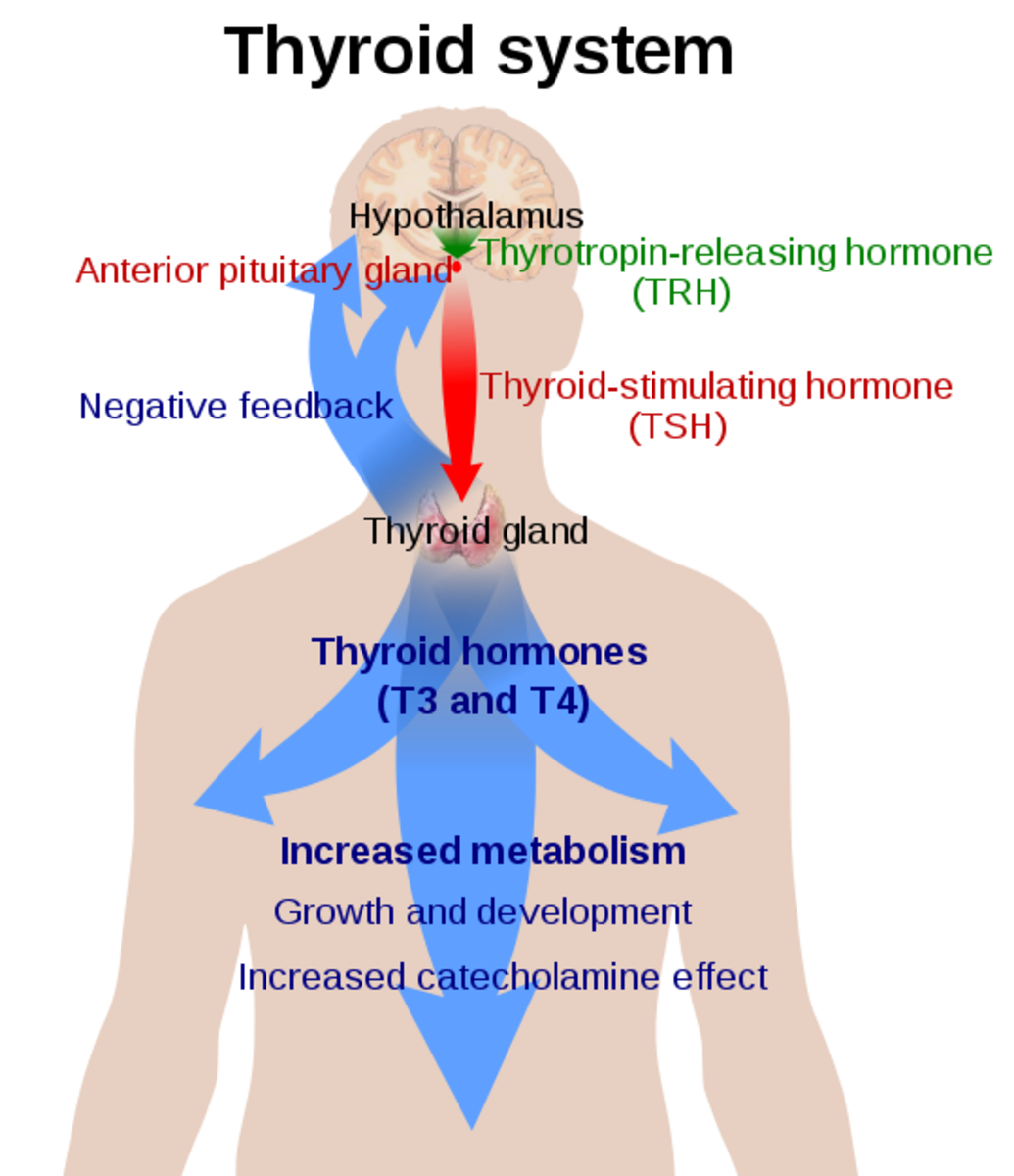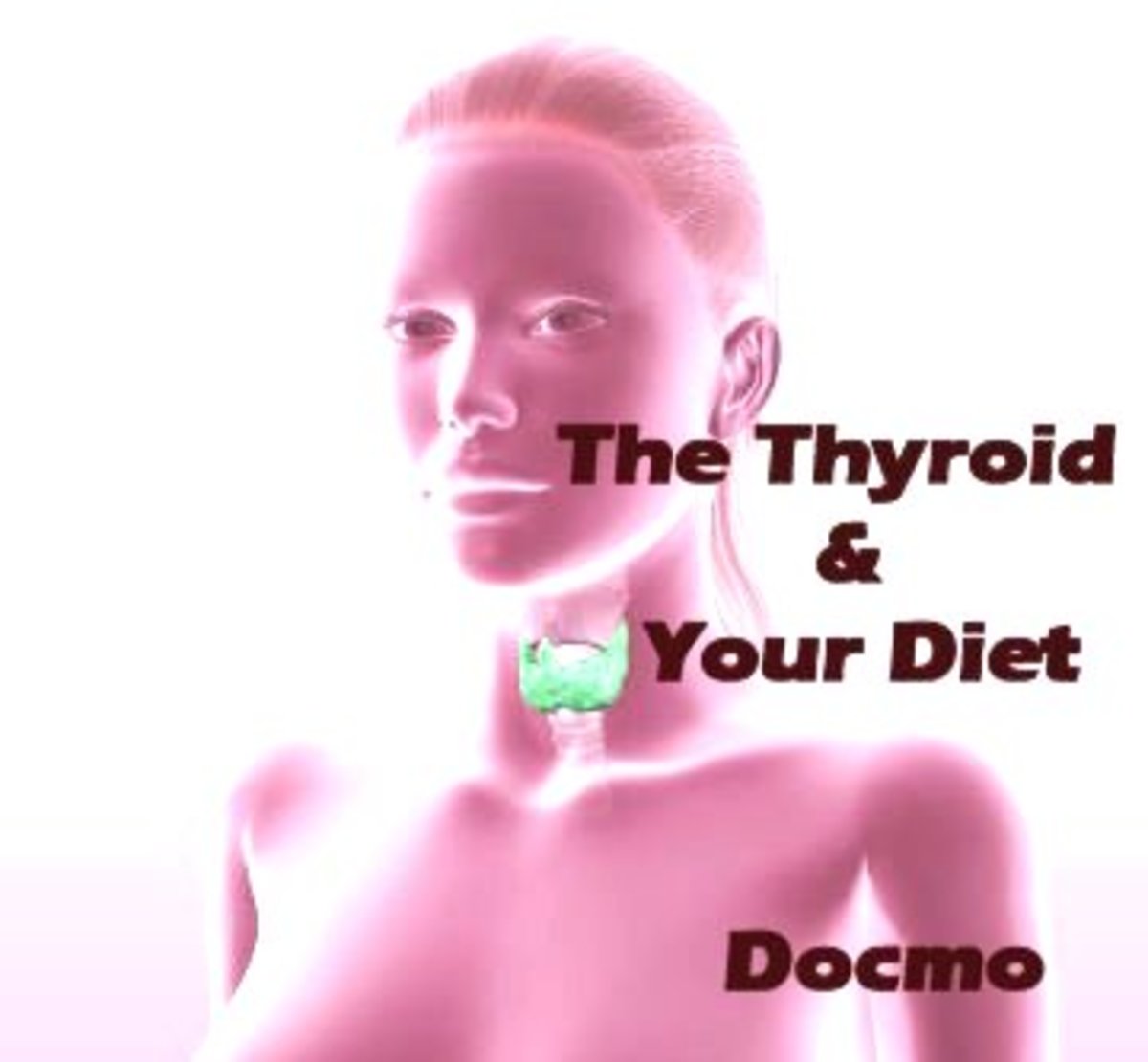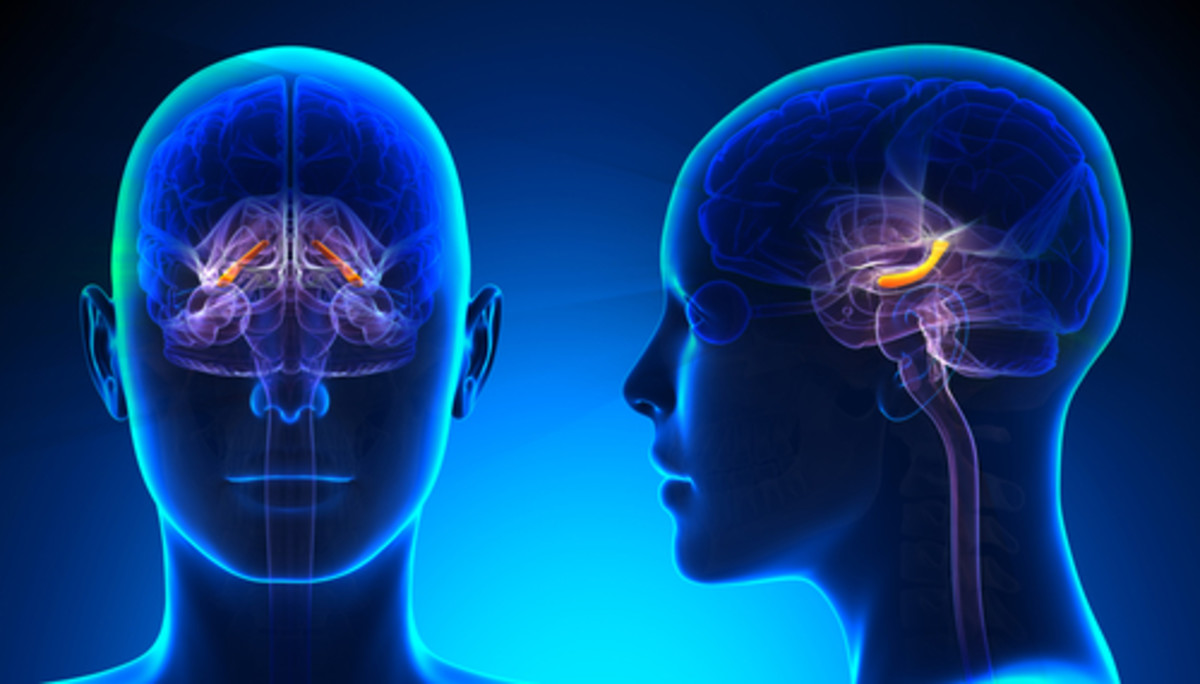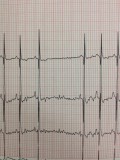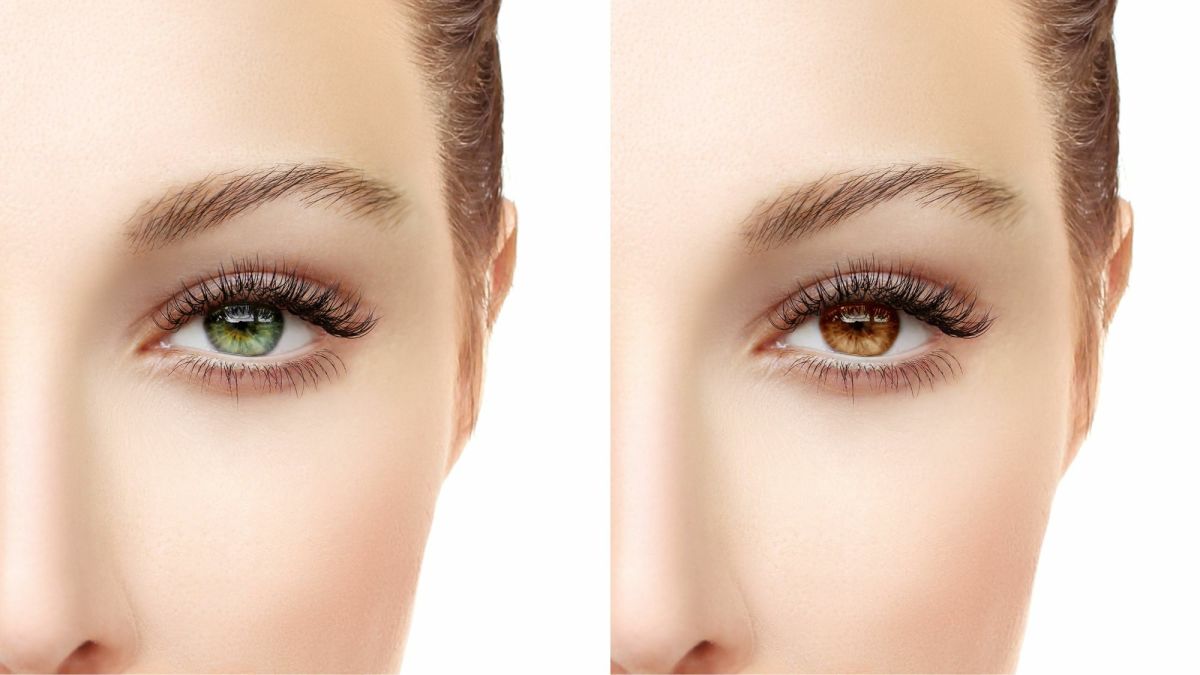All About the Thyroid
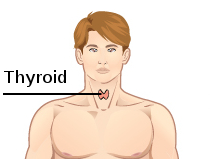
The Thyroid Gland
In our busy lives, we often don’t give thought to all the parts of body it takes to make us human. Our thyroid gland is responsible for much more than you may have ever given thought to.
The thyroid gland is located in the base of our neck where it regulates important bodily functions and releases hormones that affect the way our body metabolizes energy. The thyroid is a butterfly shaped organ, about two inches long below the Adam’s apple. The thyroid has two lobes on each side of our windpipe, connected by the isthmus, a strip of thyroid tissue. Some people don’t have an isthmus and just have two separate lobes.
What the Thyroid Gland Does
The thyroid is involved in the production, storage, and distribution of hormones in the bloodstream and is part of the endocrine system. Iodine is an important nutrient that allows the thyrod to make two important hormones:
-
Triiodothyronine (T3)
-
Thyroxine (T4)
T3 and T4 are important levels to monitor. Our brain, the hypothalamus and the pituitary gland communicate to maintain the proper T3 and T4 levels. T3 and T4 reach nearly every cell in our body. It affects our heart rate and how fast we digest food. If our levels are too low, our heart rate mey be slower than normal, and we may be constipated or have weight gain. If they are too high, we may have diarrheah and weight loss. If these levels are too low or too high in the blood, the pituitary gland will tell the thyroid to produce more or less thyroid hormones.
Some of the functions the thyroid is involved in:
-
Heart rate
-
Breathing
-
Muscle strength
-
Central and peripheral nervous systems
-
Body weight
-
Cholesterol levels
-
Menstrual cycles
-
Body temperature
-
And more
Ancient Study of the Thyroid
The thyroid can be easily monitored by measuring circulating hormones from blood tests.
Thyroidology is the study of the thyroid gland within the recently new medical field of endocrinology. The thryoid was noticed back in ancient times when people with goiter, a visible enlargement of the thyroid, showing as a swelling in the neck.
The thyroid gland was referenced often in Greek, Egyptian, and Indian medicine due to the prevalence of goiter. They didn’t understand at the time how important iodine was to diet and the prevention of goiter.
Ancient chinese medicine had references as far back as 2700 BC to goiter. Records show the condition was treated with burnt sponges and seaweed in 1600 BC because of its rich iodine content. The Chinese alchemist, Ko-Hung recommended alcohol extract of seaweed to treat goiter in 340 AD. Indian Ayurvedic medicine referred to goiters as galaganda, and classified thyroid abnormalities into hyperthyroidism (Vataja), hypothyroidism (Kaphaja) and thyroid cysts (Medaja) . A dr named Charaka noticed goiters could be prevented by consuming certain foods such as sugarcane juice, cucumber, barley, rice, and milk. He believed sour foods could aggravate thyroid conditions.
Hippocrates and Plato made references to the thyroid gland, as did another Greek physiologist named Galen.
Early paintings dating back to the 7th century, depicted goiter as one of the most common pathological conditions during Byzantine times.
The Byzantine physician, Aetius mentioned surgical treatment in the 6th century to treat goiter. He believed the cause of goiter was a hernia of the larynx. It is believed the term goiter originated from the Latin word guttur, which means larynx of the bronchus. The first successful thyroid surgery was recorded in the 10th century by Albucasis who took out a large goiter from a man while he was sedated with opium. He termed the goiter as elephantiasis of the throat.
Persian physicians from the 12th century wrote about swollen necks in patients, and correlated it with eye disease, and insatiable appetite.
French surgeion, Guy de Chaliac, in the 14th century discovered goiter is hereditary and recommended surgery to treat it.
The Thyroid Gland
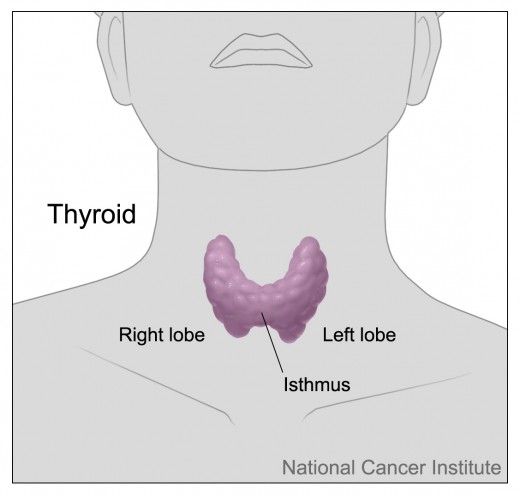
Modern Study of the Thyroid
Leonardo Da Vinci drew pictures of the thyroid gland in 1511, but didn’t understand its function, believing it separated the trachea and sternum, and helped maintain the structure of the neck.
In 1656, the anatomist, Thomas Wharton, understood the thyroid gland was responsible for secreting substances. He discovered the exact anatomical structure of the endocrine glands.
Iodine was discovered in 1811 in Paris by Bernard Courtois in the burnt ashes of seaweed. Ten years later, the physician- chemist, William Prout was the first to recommend the use of iodine for the treatment of goiter.
Eugen Baumann in the 19th century noticed sheep had a high level of iodine in their thyroid glands, and realized iodine was important to the function of the thyroid gland in humans.
In the 20th century, Robert Graves and Carvon Basedow accurately described goiters and other thyroid abnormalities.
Emil Theodor Kocher won a Nobel Prize in 1909 for his remarkable techniques in thyroid surgery and other endocrine conditions. He performed over 2000 thyroidectomies, and was known as the father of thyroid surgery.
Goiter was a common medical problem in ancient times and portrayed often in ancient paintings. Due to iron deficiency, goiter was very common. It wasn’t until the 1800s when the thyroid gland abnormalities could be explained.
In 1833, a French chemist named Boussingault, suggested iodized salt could be used to prevent goiter. In 1850, Chatin proved iodine deficiency caused goiter. Nearly 100 years later, salt enriched with iodine became commercially available.
Dr. Robert James Graves described many patients with buldging eyes (exophthalmos), goiter, and Basedow of Merseburg added palpitations, known as the Merseburg Triad. Graves disease, as it is known in the U.S. was first described in Ireland by Dr. Graves when he first noticed it in a patient in 1835. In Europe this disease is referred to as Basedow disease in 1840, named the German physician Karl Adolph van Basedow, not knowing it was discovered by Dr. Graves in 1835. This disease is an autoimmune condition which causes the thyroid gland to produce too much thyroid hormone, (hyperthyroidism). Graves disease is a hereditary condition and affects women more than men. Graves disease creates antibodies that cause the thyroid to grow, making more thyroid hormones than the body needs. Thyroid stimulating immunoglobulins (TSI) trick the thyroid into producing too much thyroid hormone, which leads to hyperthyroidism. Graves disease causes an inflammatory response in the muscles of the eyes, causing the eye tissues to swell, causing the protruding eyes, and limiting eye movement.
In 1907, David Marine proved iodine is necessary for thyroid function, and used iodine therapy ` in 1911. Charles Mayo first used the term hyperthyroidism in 1907. Drs. Plummer and Boothby used iodine treatment for preoperative management for exophthalmic goiter in 1924. Radioactive iodine was used in 1943 by differesnt doctors.
In 1914, Edward Kendall isolated thyroxine in a pure form. By 1917, he began to use it in clinical trials. In 1927, synthetic thyroxine was created to treat hypothyroidism (slow thyroid).
The thyroid was one of the first organs to be well studied by ultrasound imaging. In the late 1960s, the first reports of ultrasound began to appear.
In current times, with the discovery of genetics, science is understanding the inherited aspects of thyroid disorders. Scientists can now identify the abnormal RET gene to see which family members are predisposed to thyroid cancer. Technology continues to expand what the medical field learns and can do.
The Thyroid Has Many Jobs
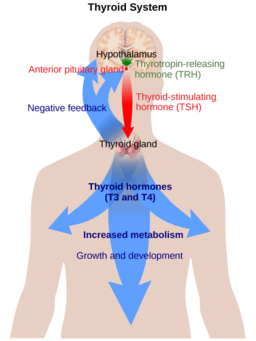
Diagnosing Diseases of the Thyroid
The study of the thyroid gland and its treatment has taken centuries to understand and treat, which has helped medicine reduce its prevalence.
Radioimmunoassay (RIA) techniques, developed by Drs. Solomon Berson and Rosalyn Yallow, help accurately diagnose diseases of the thyroid. Using a combination of two or more lab tests to detect abnormalities in the function of the thyroid. Non one laboratory test can give the accuracy doctors can get from the combination of tests. Dr. Berson and Dr. Yallow were awarded the Nobel Peace Prize in medicine in 1977 for their discovery of RIA and how it revolutionized the field of endocrinology and diagonosis and study of thyroid disease.
RIA is the most used test used to measure what is going on with the thyroid. The thyroid manufactures two hormones (T3 and T4) by combining iodine, which comes from food consumed, with an amino acid called Tyrosine. These hormones control all of the cell metabolism in our body by converting oxygen and calories into energy. Every cell needs this process to survive.
There are several thyroid disorders which affect either the structure or function of the thyroid. Thyroxine (T4), is the main hormone the thyroid gland produces. After this hormone is delivered to the body’s tissues through the bloodstream, a small portion of T4 is converted to triiodothyronine (T3), which is the most active hormone. The thyroid is regulated by the hypothalamus in the brain. When thyroid hormones are low, the brain produces thyrotropin releasing hormone (TRH), which causes the pituitary gland, located at the base of the brain, to release thyroid stimulating hormone (TSH). It is TSH that stimulates the thyroid gland to release more T4 hormone. The thyroid gland is controlled by the pituitary gland and hypothalamus, when these malfunction, it can cause thyroid disorders including:
-
Hypothyroidism
-
Hyperthyroidism
-
Goiter
-
Thyroid nodules
-
Thyroid cancer
Do you have any thyroid issues
Hypothyroidism
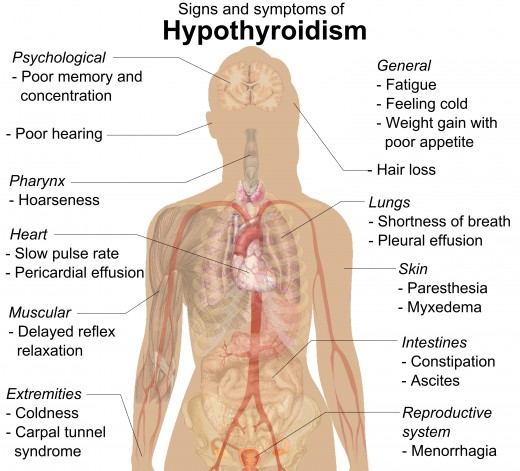
When the thyroid doesn’t function properly other problems within the body can occur. The thyroid is essential for maintaining our metabolism. Sometime thyroid disease can lead to an enlargement of the thyroid gland and can cause issues with swallowing and discomfort with the neck.
Hypothyroidism occurs when there is not enough of thyroid hormone being produced. It can happen from problems with the thyroid gland, the hypothalamus, or the pituitary gland. Hypothyroidism can be caused by:
-
Hashimoto thyroiditis, which is an autoimmune disease causing inflammation of the thyroid gland
-
Thyroid hormone resistance is a rare and inherited disease caused by mutation to the thyroid hormone receptor
-
Other inflammatory conditions of the thyroid such as acute thyroiditis and postparum thyroiditis
People who have hypothyroidism, usually suffer from:
-
Fatigue
-
Lack of ability to focus
-
Constipation
-
Dry skin
-
Feeling cold
-
Retaining fluids
-
Achy joints and muscles
-
Depression
-
Excessive or prolonged menstrual bleeding in females
Hyperthyroidism is an overproduction of the thyroid hormone. It is not as common as hypothryoidism. Symptoms include:
- Nervousness
- Concentration problems
- Fast heart rate
- Tremor
- Fatigue
- Intolerance for heat and Increased sweating
- Unintentional weight loss
- Increase in bowel movements
- In mild cases there may be no apparent symptoms
There may be several causes of hyperthyroidsim including:
- Graves' disease
- Plummer’s disease
- Thyroid nodules that over produce thyroid hormone alsoknown as hot nodules
- Excessive iodine consumption
Goiter is not necessarily a disease but it is easily seen because it causes an enlargement in the neck. The thyroid is enlarged due to normal thyroid function, hypothyroidism, or hyperthyroidsim.
Thyroid nodules are masses or lumps within the thyroid, which may be caused by benign cysts or tumors or cancer of the thyroid. Nodules can vary in size and there may be one or several.
Thyroid Cancer is more prevalent among women than men. Most cases occur in those over 55 years old.
Thyroid disorders are typically diagnosed through blood tests that measure the levels of thyroid hormones and TSH, and antibodies. Scans and imaging tests are often used to look for cysts or calcifications. Some thyroid scans use radioactive iodine to evaluate the function of thyroid nodules.
Fine needle aspiration and biopsy remove a sample of cells or tissue from the thyroid to exam.
Depending on the thyroid disorder, treatments can be done by medications or surgery.
The Thyroid Gland
The thyroid is a small but important part of our body functioning. From ancient days to current times, science has learned more about this powerful organ, its disorders, and treaments.
The thyroid gland affects nearly every aspect of our well being. A properly functioning thyroid hums along and helps everything in our body run efficiently. Thyroid disorders can wreak havoc with many bodily systems and put us at risk for other health problems, both physcially and psychologically. New understandings about the thyroid are leading to new discoveries and treatments for the thyroid. allowing much promise for improving our quality of life and wellbeing.

